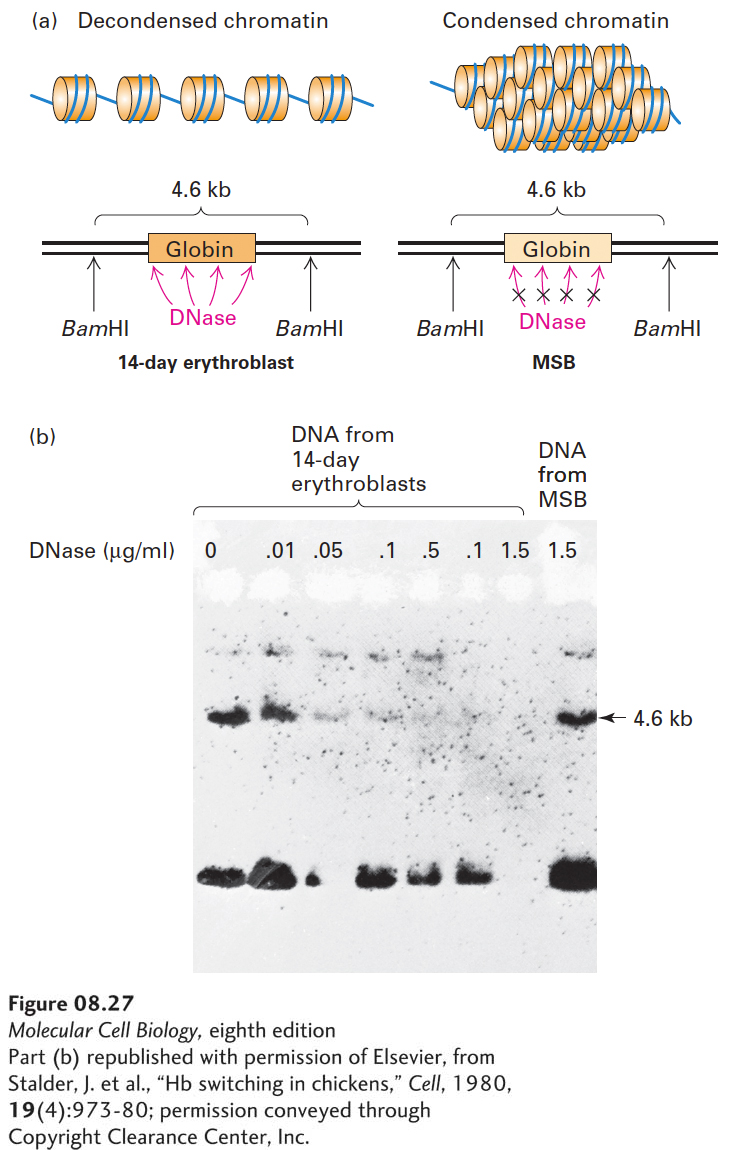
EXPERIMENTAL FIGURE 8- 27 Nontranscribed genes are less susceptible to DNase I digestion than active genes. Chick embryo erythroblasts at 14 days actively synthesize globin, whereas undifferentiated chicken lymphoblastic leukemia (MSB) cells do not. (a) Nuclei from each type of cell were isolated and exposed to increasing concentrations of DNase I. The nuclear DNA was then extracted and treated with the restriction enzyme BamHI, which cleaves the DNA around the globin sequence and normally releases a 4.6- kb globin fragment. (b) The DNase I- and BamHI- digested DNA was subjected to Southern blot analysis with a probe of labeled cloned adult globin DNA, which hybridizes to the 4.6- kb BamHI fragment. If the globin gene is susceptible to the initial DNase digestion, it should be cleaved repeatedly and would not be expected to show this fragment. As seen in the Southern blot, the transcriptionally active DNA from the 14- day globin- synthesizing cells was sensitive to DNase I digestion, indicated by the absence of the 4.6- kb band at high nuclease concentrations. In contrast, the inactive DNA from MSB cells was resistant to digestion. These results suggest that the inactive DNA is in a more condensed form of chromatin in which the globin gene is shielded from DNase digestion. See J. Stalder et al., 1980, Cell 19:973.
[Part (b) republished with permission of Elsevier, from Stalder, J. et al., “Hb switching in chickens,” Cell, 1980, 19(4):973- 80; permission conveyed through Copyright Clearance Center, Inc.]
[Leave] [Close]